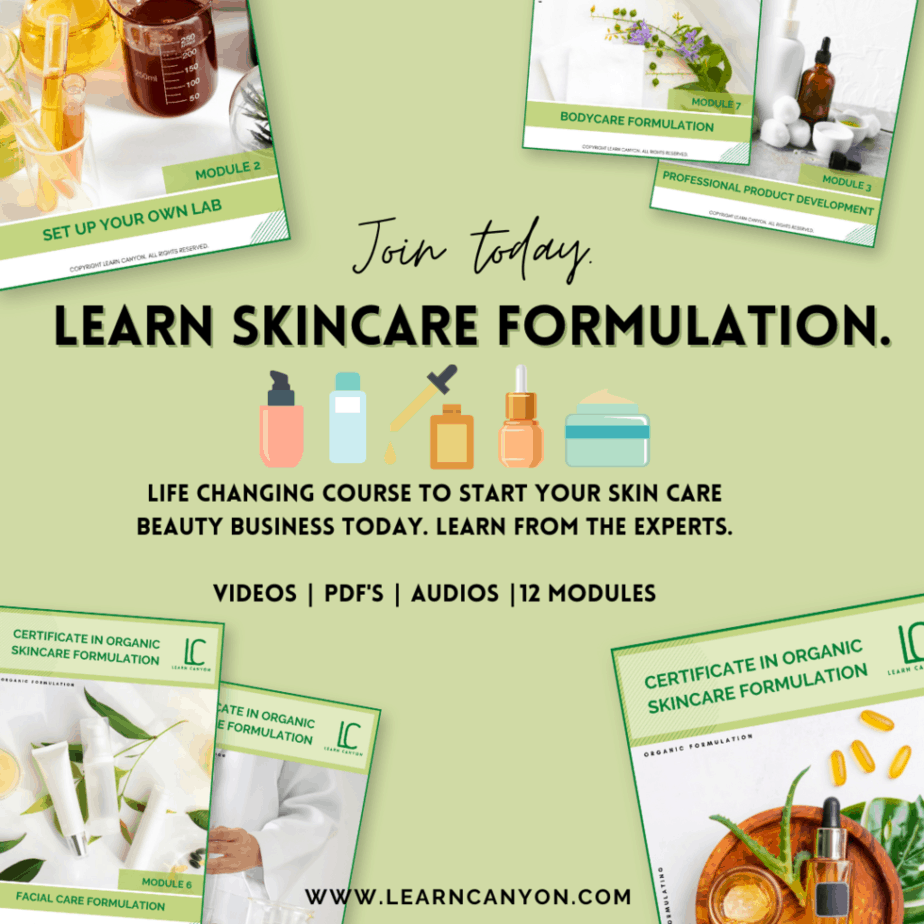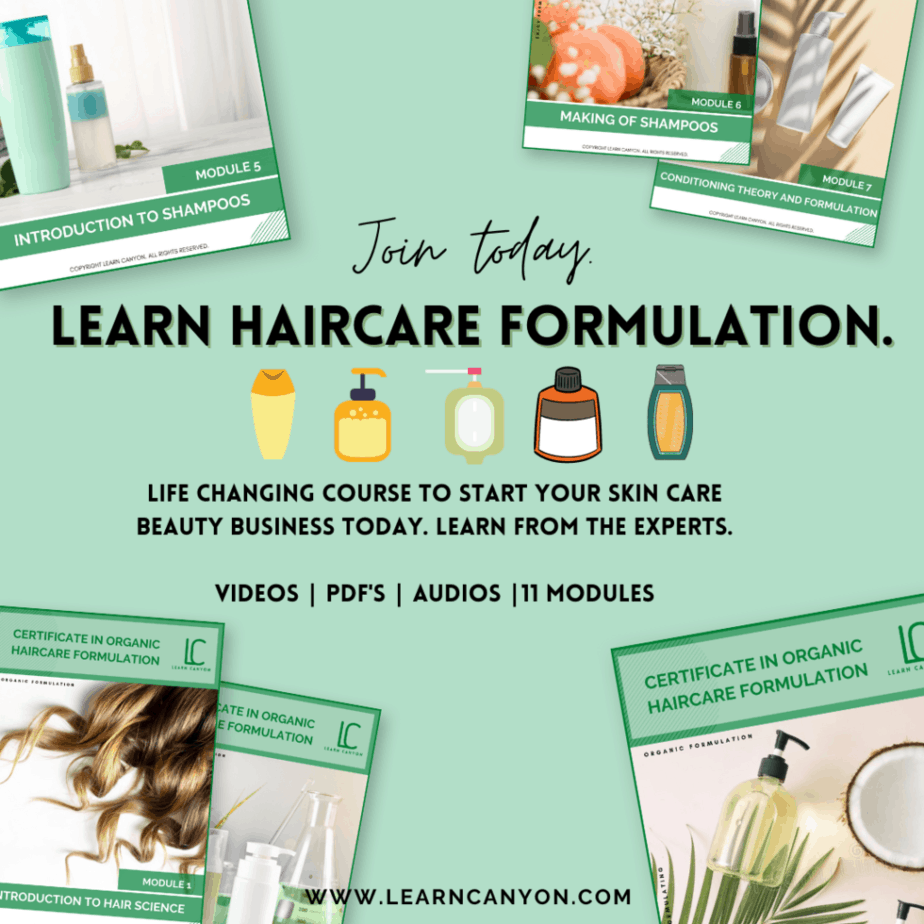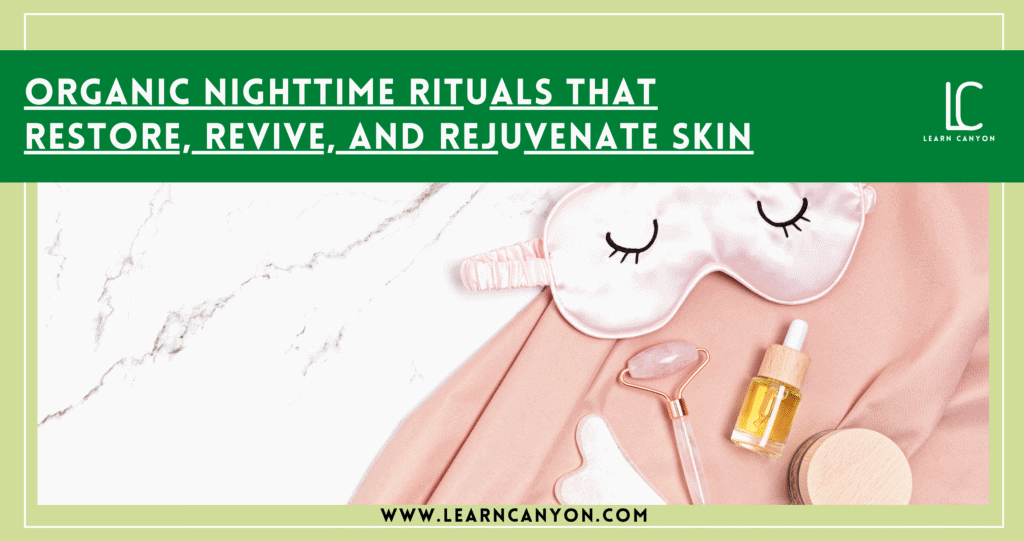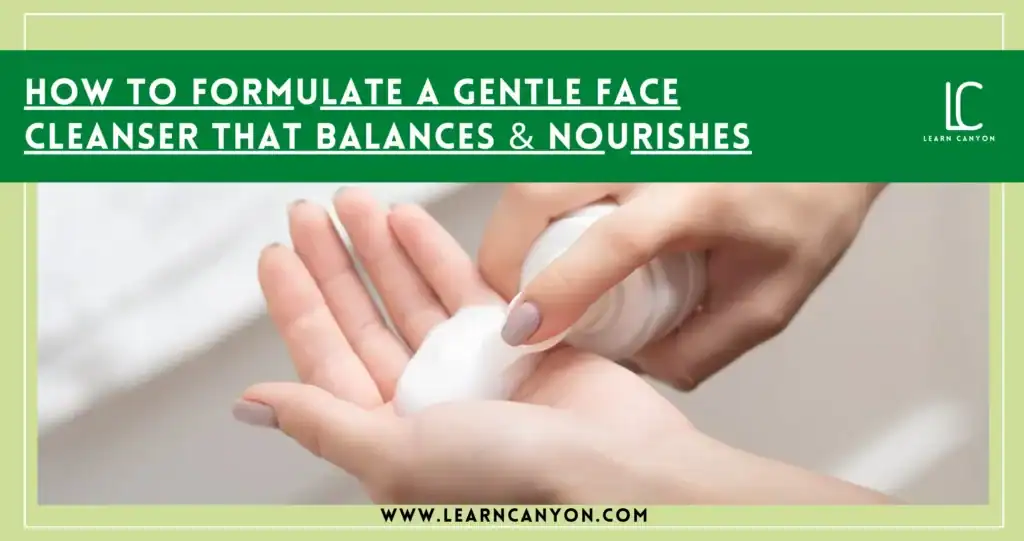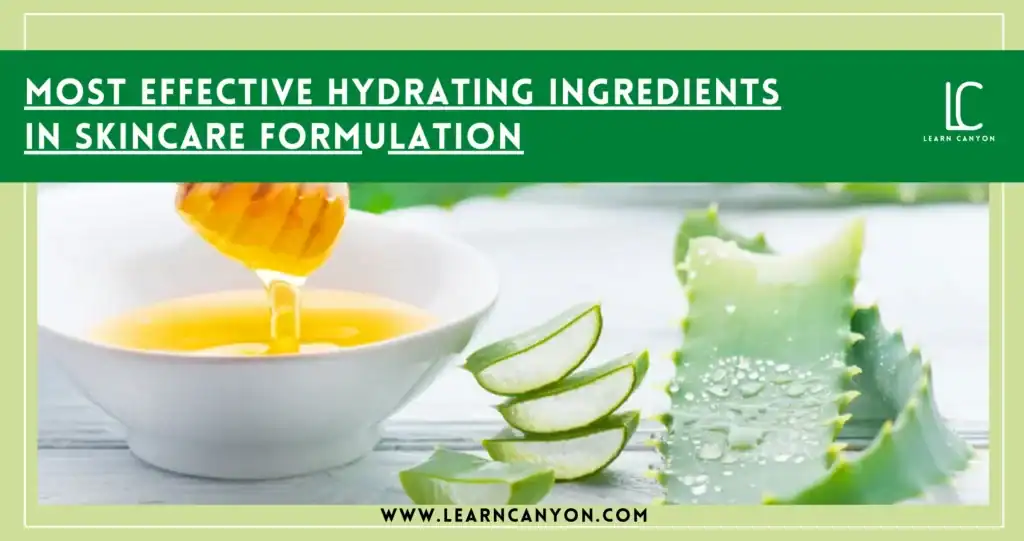Let’s be honest, your skin works just as hard as you do during the day.
And while you’re finally catching up on rest, your skin is getting to work. Nighttime isn’t just about closing your eyes, it’s your skin’s golden window for deep repair, renewal, and restoration.
As a formulator who’s spent years crafting organic skincare rituals, I can tell you this: the products you use at nighttime have the highest potential to truly transform your skin. Why? Because while you sleep, your body diverts its energy from fighting external stressors like pollution, sun, and makeup to internal healing. That’s when skin regeneration peaks, making it the perfect time to feed your skin with nourishing, potent botanicals and skin-loving actives.
In fact, some of the most effective organic ingredients work best when applied at night, think rejuvenating oils, barrier-strengthening butters, calming plant extracts, and natural cell-renewing compounds like Bakuchiol or CoQ10.This blog is your guide to understanding not just what to apply at nighttime, but how to build an intentional, sensory-rich routine that aligns with your skin’s natural rhythm. Whether you’re formulating for yourself, your brand, or your clients, let’s dive into the organic magic that happens while the world sleeps.
The Science Behind Nighttime Skin Renewal
Let’s take a peek beneath the surface, literally. While you’re sleeping, your skin isn’t just lying still. It’s in full action mode, diving into one of the most powerful biological processes it performs: regeneration.
Every day, your skin defends itself against sun exposure, environmental toxins, stress, and even blue light. Come nightfall, the focus shifts from protection to repair. This is when your skin gets busy producing new cells, repairing DNA damage, restoring the lipid barrier, and balancing hydration levels. It’s kind of like hitting the reset button.
From a formulator’s perspective, this is fascinating, and incredibly important. During sleep, skin permeability increases, meaning it’s more receptive to the ingredients you apply. Blood flow to the skin also rises, which helps deliver nutrients more efficiently. This is why it’s the best time to use high-performance actives like natural retinol alternatives, peptides, ceramides, and plant-based antioxidants. They don’t just sit on the surface, they’re actually working with your biology.
Another fun fact? The skin’s temperature goes up at night, which can lead to transepidermal water loss. This is exactly why nighttime formulations should emphasize hydration and barrier repair, think hyaluronic acid paired with rich butters or nourishing oils to seal everything in.
So, while you’re getting your beauty sleep, your skin is undergoing its very own detox, renewal, and restoration ritual. And as a formulator, your goal is to design products that support this rhythm, not disrupt it.
The next time someone says “you’re glowing,” thank your night care routine (and your formulator).
Core Principles of an Organic Nighttime Ritual
An organic nighttime ritual isn’t just about applying products, it’s about being intentional. It’s the gentle pause at the end of a long day where you tell your skin, “I’ve got you.” And as a formulator, I see nighttime care as an art, where formulation meets ritual, and ingredients meet rhythm.
So what actually makes an organic nighttime routine effective? Let’s break it down.
1. Purity of Ingredients
Your skin is more vulnerable at night, so what you feed it matters even more. Choose certified organic oils, botanical extracts, and essential oils that are pure, potent, and free of synthetic irritants. Think rosehip oil, aloe vera juice, chamomile hydrosol, ingredients that nurture without overwhelming.
2. Purposeful Layering
Each step in your ritual should support the one before it. Cleanse gently, tone mindfully, treat with concentrated actives, and seal in moisture with emollient-rich creams or balms. Organic skincare loves to work in harmony, so think about how your textures and ingredients play together.
3. Focus on Repair & Renewal
Unlike daytime products that are all about defense, your night formulations should revolve around soothing, restoring, and regenerating. Incorporate ingredients that boost collagen, calm inflammation, and replenish the skin barrier.
4. Sensory Experience
This is your time to wind down. The scent of lavender, blue tansy, or neroli can calm the nervous system while also benefiting the skin. Texture matters too, formulations should feel indulgent, not greasy or heavy. It’s about making the ritual feel luxurious, even if it’s only five minutes long.
5. Consistency Over Complexity
You don’t need a 10-step routine. In fact, too much can overwhelm the skin. A thoughtful 3–5 step ritual using high-quality, synergistic formulations can deliver better results than a shelf full of mismatched products.
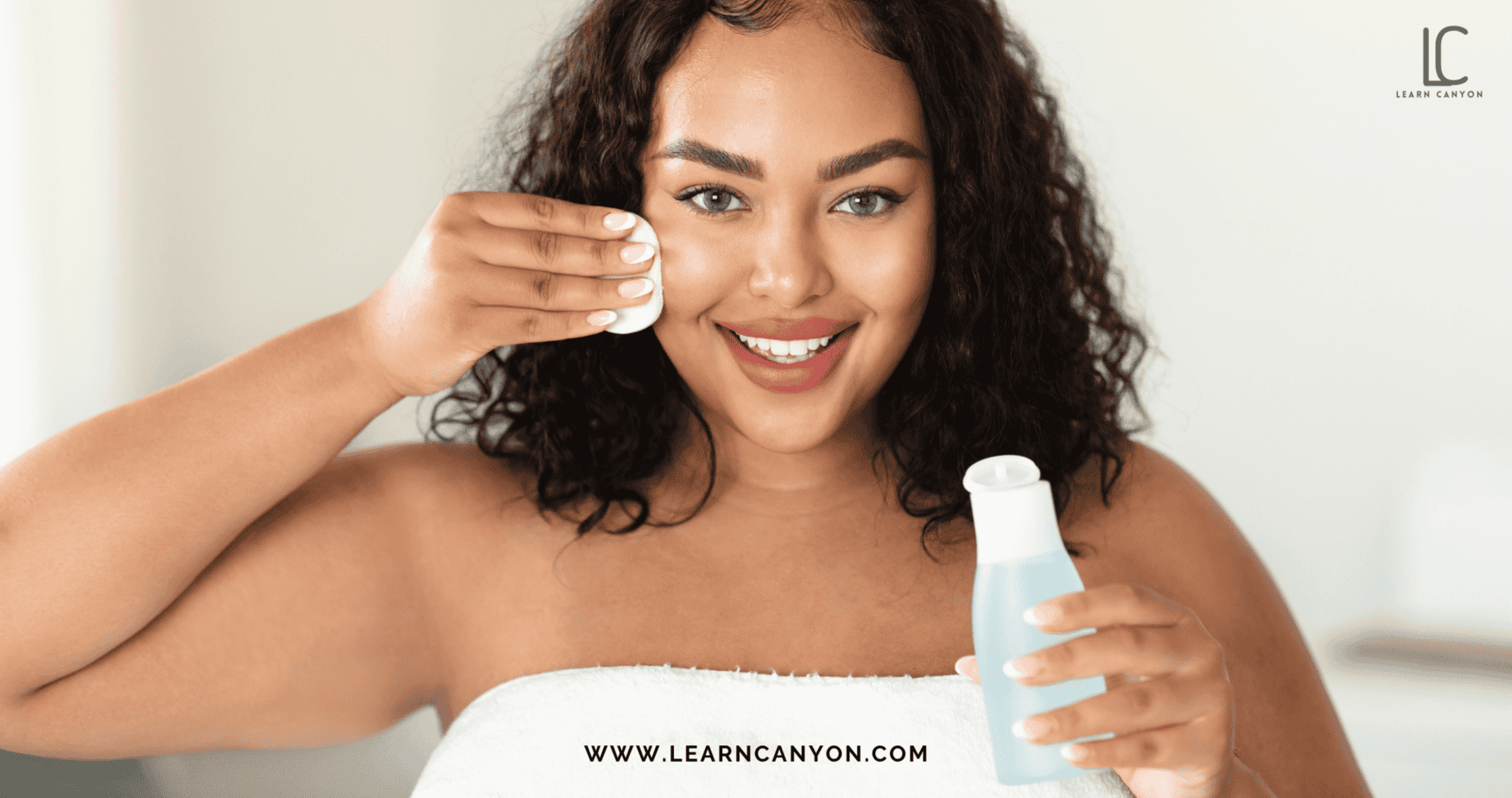
When you approach night care with these principles, you’re not just applying products, you’re creating space for healing, renewal, and connection with your skin. That’s the real magic of organic skincare.
Step-by-Step Night Care Routine with Organic Formulation Insights
Let’s make one thing clear, your nighttime routine doesn’t have to be complicated. It just needs to be intelligent. When we formulate with intention, every step becomes an opportunity to support the skin’s natural rhythm. Think of it like designing a symphony, where each product plays its own beautiful role in skin renewal.
Here’s a simple, powerful routine that works across most skin types, paired with behind-the-scenes insights on how I approach formulation at each step:
Step 1: Oil or Cream Cleanser
At night, we’re not just removing makeup, we’re lifting off the day. I always recommend an oil-based or cream cleanser that gently dissolves grime without stripping your barrier.
Formulator’s Tip: Use organic cold-pressed oils like sunflower, hemp seed, or moringa paired with natural emulsifiers like Sucrose Laurate to create a rinse-off cleansing balm. Add a touch of lavender EO for a calming experience.
Step 2: Hydrosol-Based Toner or Botanical Mist
This step refreshes, hydrates, and preps the skin to absorb actives. Avoid harsh astringents, instead, go for floral waters or infusions.
Formulator’s Tip: Blend rose hydrosol, chamomile hydrosol, and a drop of glycerin or sodium PCA for a simple humectant-rich mist. You can infuse this with green tea or calendula for added benefits.
Step 3: Serum
Nighttime is the perfect moment to deliver targeted treatments, whether it’s for hydration, brightening, or cell renewal.
Formulator’s Tip:
- For anti-aging: Combine Bakuchiol, Coenzyme Q10, rosehip oil, and squalane in a lightweight oil serum.
- For barrier repair: Use niacinamide, beta-glucan, and pro-vitamin B5 in an aloe-based gel serum.
Always keep pH and ingredient compatibility in mind, especially when layering actives.
Step 4: Night Cream, Balm, or Sleeping Mask
This is your seal-and-repair step. Choose based on skin type:
- Creams for balanced skin
- Balms for dry, mature skin
- Gel-creams or sleep masks for oily or acne-prone skin
Formulator’s Tip: Use butters like shea or kokum, blended with jojoba oil, ceramide-rich wheat germ oil, and stabilizers like cetyl alcohol or cetearyl olivate for an elegant finish. Add actives like vitamin E, bisabolol, or blue tansy EO for soothing action.
Step 5: Eye Treatment (Optional but Worth It)
The skin around the eyes is delicate, and nighttime is ideal for targeting puffiness or fine lines.
Formulator’s Tip: Create a gentle balm or gel with cucumber extract, caffeine, licorice root, and hyaluronic acid in a low-oil emulsion. Use carrot seed oil and chamomile for added benefits.
Formulator’s Wisdom: Each step should complement, not compete with, the next. Avoid overloading your skin with actives, and allow your ingredients to breathe and synergize. And always, always test your formulations across multiple skin types and climates for the best results.
When your nighttime routine is built with intention, science, and soul, it becomes more than skincare. It becomes a ritual of restoration.
Hero Organic Ingredients for Nighttime Repair
If I had to choose my favorite part of formulating night care rituals, it would be this: handpicking the ingredients that work in perfect harmony with the skin’s natural renewal process. At nighttime, your skin is more permeable, more relaxed, and frankly, more open to receiving. And that’s when these botanical powerhouses shine.
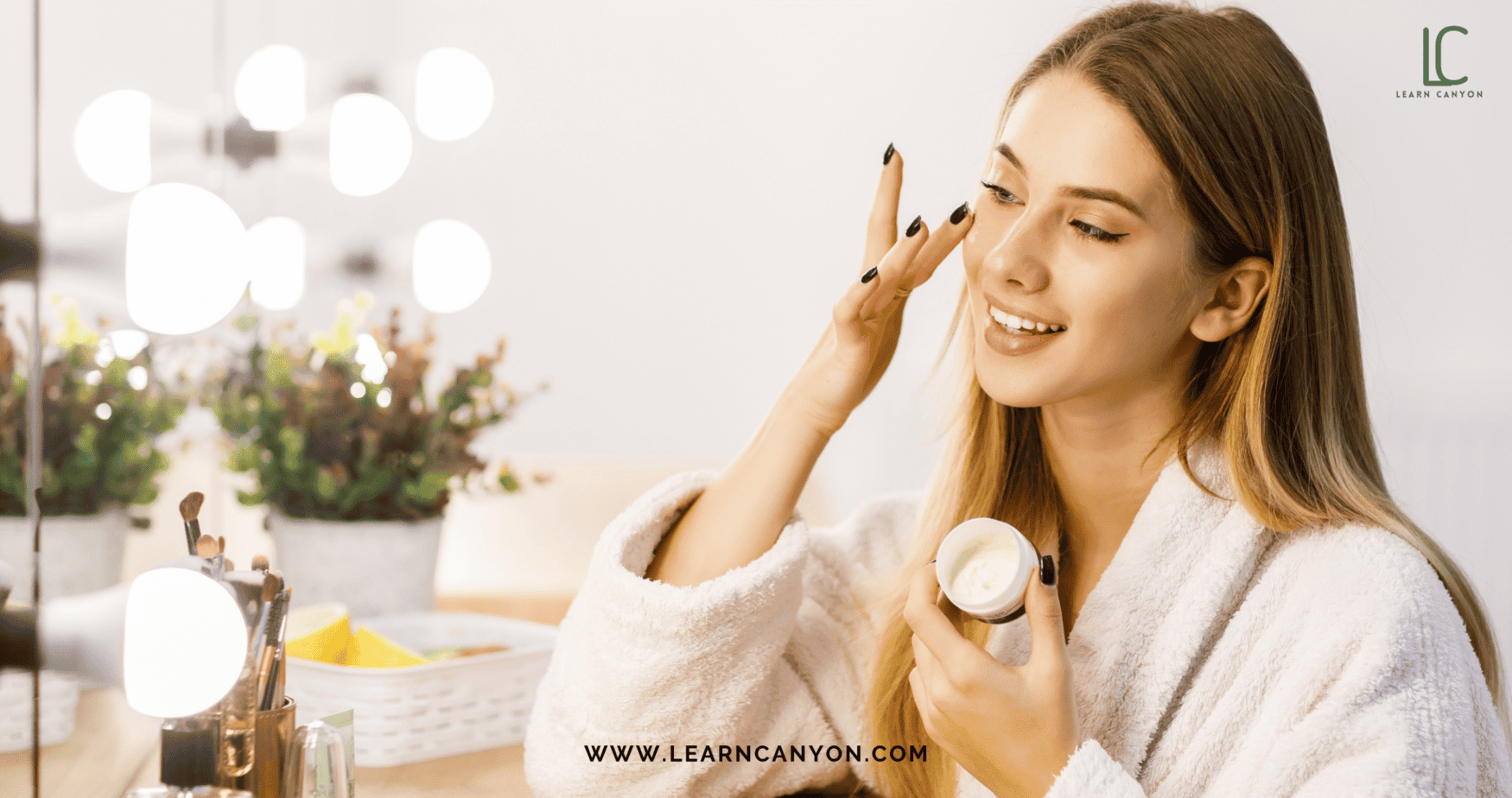
Here are my absolute must-haves when designing organic formulas for nighttime rejuvenation:
1. Bakuchiol
Gentle, yet effective. Bakuchiol offers the benefits of retinol, like stimulating collagen, reducing fine lines, and evening out skin tone, without the irritation.
Formulator’s Note: Use at 0.5%–1% in oil serums or emulsions. It plays beautifully with niacinamide and squalane.
2. Rosehip Seed Oil
Packed with pro-vitamin A, omega-3 and omega-6 fatty acids, this cold-pressed oil is a dream for dry, damaged, or mature skin.
Why I love it: It’s like food for skin that’s been through a lot, sun damage, pigmentation, acne scars.
Formulator’s Tip: Keep it under 15% in a blend to avoid oxidizing too fast. Combine with vitamin E or rosemary CO2 for stability.
3. Sea Buckthorn CO2
This bright orange oil is liquid gold for inflamed or dull skin. Rich in beta-carotene, vitamin E, and palmitoleic acid, it speeds up cellular repair.
Formulator’s Tip: Just 1% in your blend is enough for noticeable results. It also adds a beautiful golden tint to night balms and masks!
4. Niacinamide
Though not an oil, this water-soluble vitamin B3 is a must in nighttime formulations. It improves elasticity, brightens uneven tone, and strengthens the barrier.
Formulator’s Note: Use 3–5% in a pH-balanced serum or gel-cream. Combine with panthenol and oat beta-glucan for a calming, restorative trio.
5. Chamomile Extract or Blue Tansy EO
These botanical extracts are perfect for sensitive or reactive skin, calming redness, and supporting gentle regeneration.
Formulator’s Tip: Infuse chamomile into aloe-based gels, or add just a drop of blue tansy EO to a balm or oil serum for that signature calming blue hue.
6. Coenzyme Q10
This fat-soluble antioxidant supports cell energy and renewal, which naturally declines with age.
Formulator’s Tip: Use in oil serums or emulsions at 0.5–1%. Blend with squalane or meadowfoam seed oil for better penetration.
7. Squalane
This ingredient mimics the skin’s own sebum, making it ideal for all skin types. It’s stable, non-comedogenic, and gives formulations that silky finish everyone loves.
Formulator’s Note: Works as an excellent base for serums or in the oil phase of night creams.
Bonus Ingredient: Lavender Essential Oil
Not just for its calming aroma, lavender also has anti-inflammatory and antimicrobial properties. It supports wound healing and pairs beautifully with other botanicals. Just remember: low % goes a long way. I usually stay under 0.5%.
When these ingredients are selected thoughtfully and combined with intention, they don’t just “do the job”, they help the skin truly reset and restore. That’s the beauty of organic formulation, it’s not about piling on actives, it’s about creating synergy.
Crafting the Right Texture for Nighttime: Creams, Gels, or Balms?
Let’s talk textures, because the feel of a product on your skin is just as important as the ingredients inside. One of the most common questions I get as a formulator is, “How do I know which texture is best for a night routine?” My answer? It all comes down to skin type, climate, and comfort.
Here’s how I approach it when designing formulas that actually make people look forward to their nighttime ritual:
1. Creams:
Creams are the most universally loved texture, rich enough to moisturize, yet light enough to absorb beautifully. They work especially well for normal to dry skin types or when formulating for cooler climates.
Formulator’s Insight: Create an emulsion using butters (like shea or mango), plant oils (like rosehip or marula), and water-loving ingredients like aloe vera, glycerin, or panthenol. Use a gentle emulsifier like Olivem 1000 or Ritamulse SCG for a natural, skin-friendly finish. And don’t forget to play with cetyl alcohol or cetearyl alcohol to tweak the texture, whether you want a whipped cream feel or a more buttery glide.
2. Gels or Gel-Creams:
If you’re formulating for oily, acne-prone, or sensitive skin, a gel or gel-cream is your go-to. These textures deliver hydration without clogging pores or feeling heavy, making them ideal for humid climates or hot nights.
Formulator’s Insight: Use bases like aloe vera juice, hydrosols, or rose water combined with humectants like sodium PCA, hyaluronic acid, or beta-glucan. Natural thickeners like xanthan gum, sclerotium gum, or hydroxyethyl cellulose give that soft, jelly-like texture. For a gel-cream twist, introduce a little oil phase using caprylic/capric triglycerides or squalane and a cold-process emulsifier like Simulgel.
3. Balms:
Balms are rich, concentrated, and designed to cocoon the skin in comfort. Perfect for dry, mature, or barrier-compromised skin, or during harsh winter months. I call them “skin blankets.”
Formulator’s Insight: Think minimal water, if any. Use a base of shea butter, kokum butter, or mango butter, softened with liquid oils like jojoba, sea buckthorn, or evening primrose. Add a touch of candelilla wax or beeswax to create structure. For a sensorial upgrade, infuse your balm with a gentle essential oil blend, maybe lavender, frankincense, or blue tansy for that dreamy nighttime vibe.
Texture Tip: Don’t be afraid to let your customer’s skin guide your choice. Sometimes, one texture won’t suit every night. In fact, offering a range of textures, or teaching clients when to switch between a cream and a balm, makes your product line or practice truly holistic.
Whether your final formula feels light as a feather or rich as a cloud, what matters most is how it supports the skin’s nighttime renewal. Choose textures that feel like a hug for the skin, because that’s what a good night ritual should be.
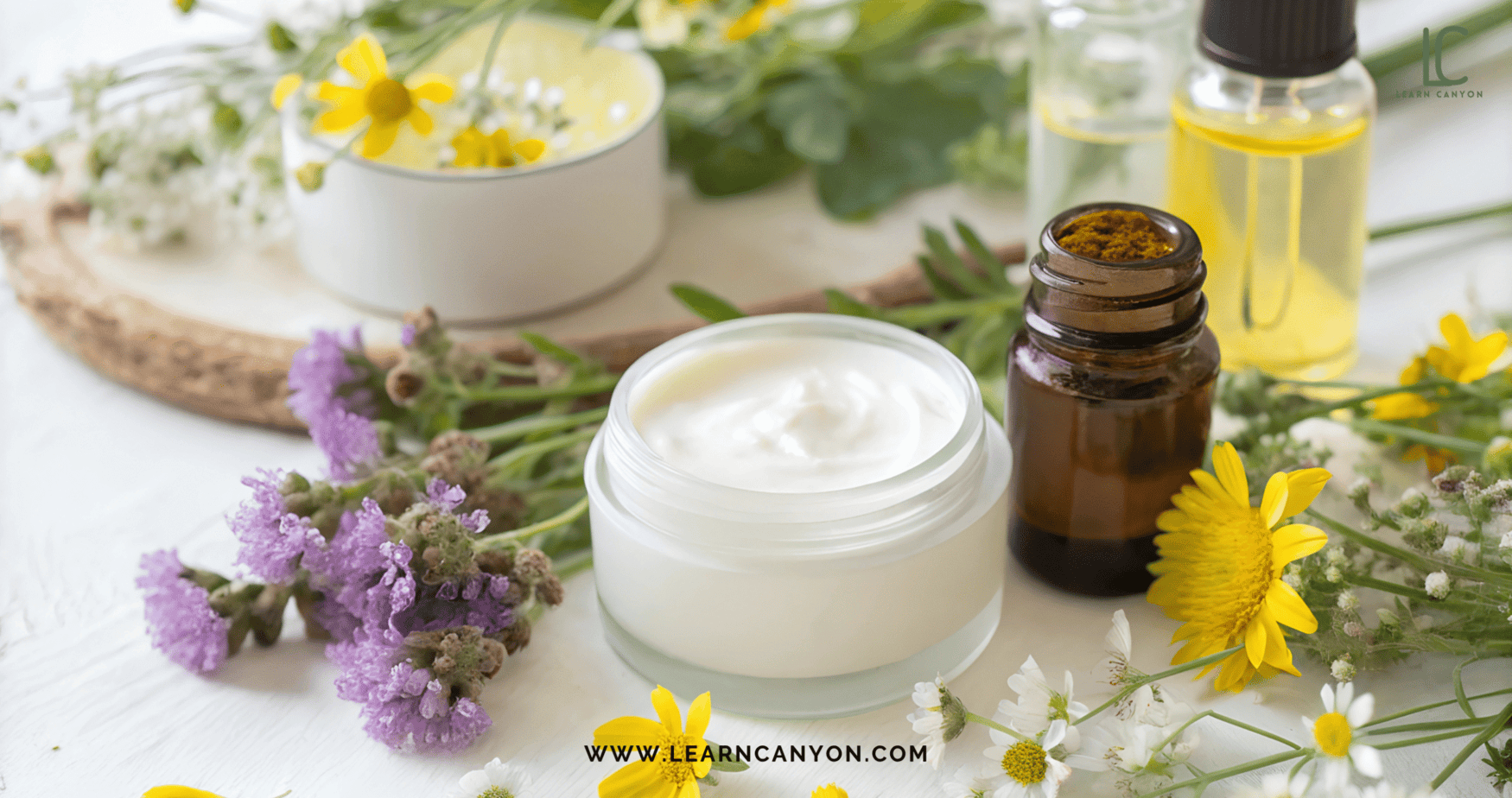
Night vs. Day Formulations: What’s the Difference?
Let’s bust a common myth: skincare isn’t “one-size-fits-all-day.” Your skin behaves differently during the day compared to the night, and as formulators, we need to honor that rhythm. Just like how you wouldn’t wear your cozy pajamas to a business meeting (unless it’s one of those WFH days), your skin needs different ingredients, textures, and goals during the day and at night.
Here’s how I like to break it down:
Day Formulations:
During the day, your skin is exposed to UV rays, pollution, blue light, makeup, stress, and more. It’s in defense mode. So your formulations should be designed to shield, hydrate, and support the barrier while staying lightweight and breathable.
Formulator’s Focus for Day Products:
- Antioxidants like vitamin C, green tea, or ferulic acid to fight free radicals
- Hydrators like hyaluronic acid, glycerin, or sodium PCA
- Emollients that are non-greasy (like squalane or jojoba oil)
- SPF, always, always SPF! Even if it’s a mineral-based finish
- Lightweight textures: lotions, fluids, gel-creams
Night Formulations:
At nighttime, your skin goes into recovery mode. This is the golden window where we get to bring out the big (but gentle) actives, think cell renewal, deep nourishment, and skin barrier healing.
Formulator’s Focus for Night Products:
- Cell-regenerating ingredients like bakuchiol, rosehip oil, niacinamide, or peptides
- Barrier-supporting compounds like ceramides, butters, and fatty acids
- Calming agents like bisabolol, calendula, or chamomile for inflammation
- Antioxidants like Coenzyme Q10 and vitamin E for overnight repair
- More occlusive or rich textures like creams, balms, or overnight masks
Pro Tip: If you’re designing a full product line, make sure your night and day products complement each other. For example, if your day serum includes vitamin C, your night serum could focus on barrier repair with niacinamide and pro-vitamin B5. It’s all about building a 24-hour skincare cycle that flows.
When we formulate with the skin’s natural rhythm in mind, results don’t just show, they glow. It’s this day-and-night synergy that transforms good skincare into truly effective rituals.
Sample Organic Night Formulas
If there’s one thing I know for sure, it’s that well-crafted nighttime formulations can completely change how someone feels about their skin. Over the years, I’ve developed (and refined) countless nighttime formulas, but there are a few that always deliver results and leave people saying, “Wow, I woke up glowing!”
Here are three of my most-loved, beginner-to-intermediate-friendly organic night formulations. Each one is thoughtfully designed with purpose, balance, and skin comfort in mind. Let’s dive in!
1. Radiance Repair Nighttime Balm (For Dry, Dull, or Mature Skin)
This buttery balm melts into the skin like a dream and is packed with barrier-restoring lipids and glow-giving botanicals.
Formula (%):
- Shea Butter – 35%
- Jojoba Oil – 25%
- Rosehip Seed Oil – 15%
- Sea Buckthorn CO2 – 1%
- Candelilla Wax – 7% (for structure, vegan option)
- Vitamin E (Tocopherol) – 0.5%
- Lavender Essential Oil – 0.3%
- Blue Tansy Essential Oil – 0.2%
- Optional: Rosemary CO2 – 0.1% (as antioxidant)
- Q.S. to 100% with Squalane
Why it works: Rich in omega fatty acids and antioxidants, this balm seals in hydration, reduces redness, and promotes overnight skin regeneration. A little goes a long way.
2. Botanical Sleep Serum (For All Skin Types, Especially Dehydrated Skin)
This oil-based serum is light, deeply nourishing, and perfect for layering under a nighttime cream or balm.
Formula (%):
- Squalane (Olive-derived) – 40%
- Jojoba Oil – 20%
- Evening Primrose Oil – 10%
- Rosehip Seed Oil – 10%
- Coenzyme Q10 (pre-dissolved in oil) – 1%
- Bakuchiol – 1%
- Vitamin E – 0.5%
- Frankincense EO – 0.3%
- Geranium EO – 0.2%
- Q.S. with Meadowfoam Oil to 100%
Why it works: Designed to boost cell renewal, support the lipid barrier, and even out skin tone without clogging pores. It absorbs beautifully, making it a dreamy choice for sensitive and aging skin alike.
3. Calming Chamomile Night Cream (For Sensitive, Redness-Prone Skin)
This gentle emulsion soothes stressed skin and offers long-lasting comfort without heaviness at nighttime.
Formula (%):
Phase A:
- Chamomile Hydrosol – 55%
- Aloe Vera Juice – 15%
- Glycerin – 3%
- Allantoin – 0.5%
Phase B:
- Shea Butter – 4%
- Jojoba Oil – 6%
- Cetyl Alcohol – 2%
- Olivem 1000 – 6%
Phase C (Cool-down):
- Panthenol – 2%
- Bisabolol – 0.5%
- Preservative (EcoCert approved) – 1%
- Vitamin E – 0.5%
- Q.S. with distilled water to 100%
Final pH: Adjust to 5.0–5.5
Why it works: Chamomile, bisabolol, and panthenol team up to calm and restore. This cream is perfect for those whose skin needs a break from stress or seasonal changes.
Final Note: Every skin is different, and so is every formulation journey. These aren’t just recipes, they’re invitations to explore texture, synergy, and sensory experience. Tweak them, make them your own, and always formulate with intention.
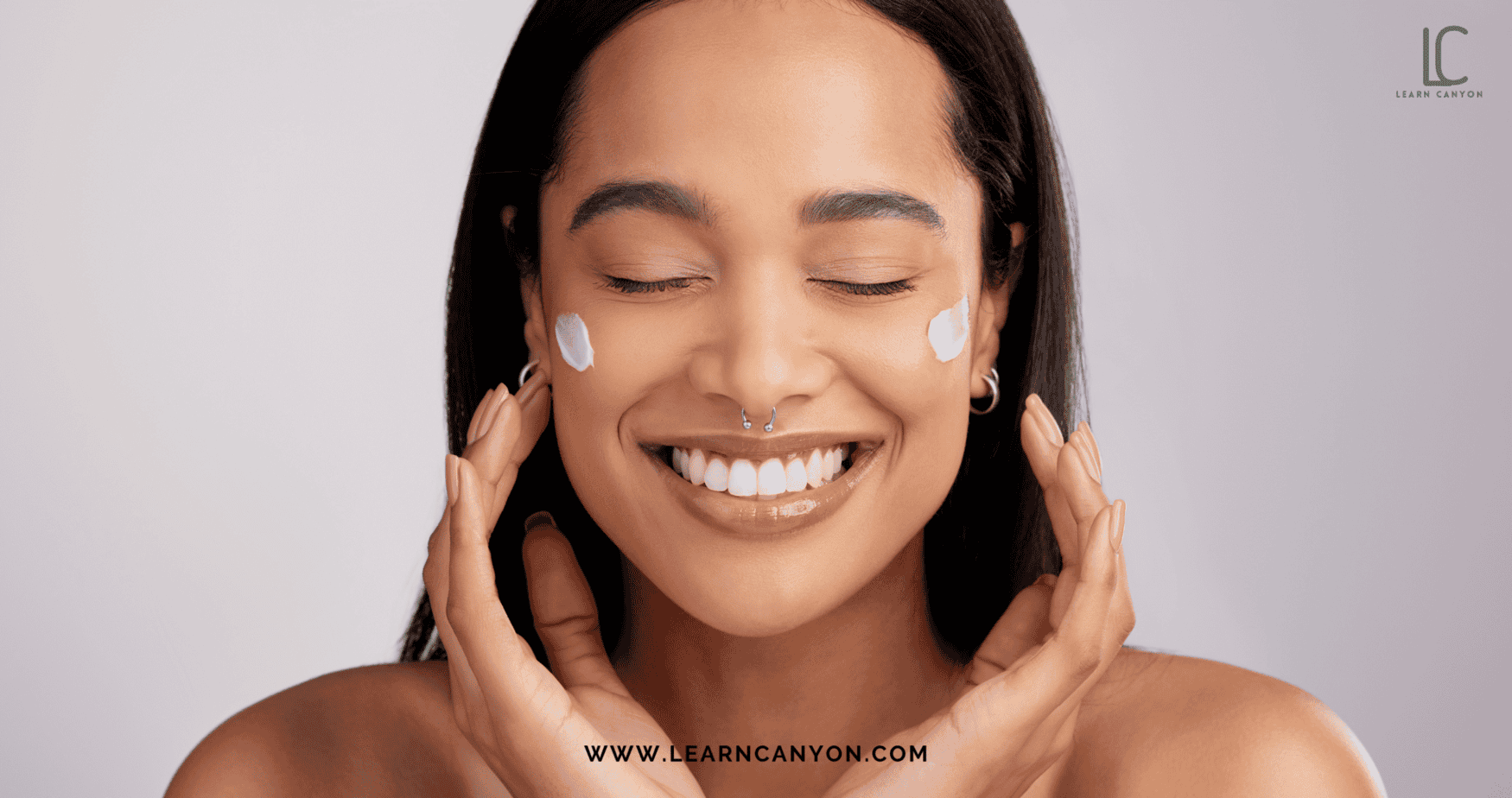
Bonus Rituals:
Let’s be honest, skincare isn’t just about the product. It’s about how you apply it, the energy you bring to the moment, and the connection you build with your own skin. As a formulator, I’ve always believed that the way a product is used is just as important as what goes into it. That’s where these bonus rituals come in, they help turn your nighttime routine into a sensory experience your skin (and soul) will thank you for.
Aromatherapy:
Essential oils aren’t just functional, they’re emotional. When used thoughtfully and safely, they can enhance your formulation and your mood. Nighttime is perfect to tap into their calming powers.
My go-to nighttime EOs (used at safe dermal levels):
- Lavender – Calming, gentle, and universally loved
- Frankincense – Deeply grounding and wonderful for mature skin
- Roman Chamomile – Excellent for sensitive skin and calming the nervous system
- Bergamot FCF – Brightens the spirit without the photosensitivity
- Blue Tansy – A skin soother and stress reducer with that beautiful deep blue hue
Formulator’s Tip: A well-balanced EO blend (around 0.3–0.5%) in a balm or cream can transform a basic nighttime routine into a sensorial ritual. Always consider your target user’s sensitivity, especially for nighttime products where essential oils can linger longer on the skin.
Gua Sha:
Now, let’s talk touch. Gua Sha isn’t just trendy, it’s an ancient healing technique that supports circulation, releases tension, and helps skincare penetrate better. When used with a serum or balm, it glides beautifully across the skin, relieving facial puffiness and improving tone over time.
How I recommend it in rituals:
- Use slow, intentional strokes, always in an upward and outward motion
- Pair with a light oil or balm for slip (your Botanical Sleep Serum is perfect for this!)
- Focus on the jawline, cheekbones, brow, and neck
- Breathe deeply while you do it, it’s a meditative moment more than a massage
This isn’t about forcing results. It’s about creating space for your skin to receive. When you combine a thoughtfully formulated product with mindful rituals like these, the magic multiplies.
Priya’s Ritual Reminder: As formulators and skincare lovers, we’re not just crafting routines, we’re crafting experiences. Adding aromatherapy and facial massage doesn’t require fancy tools or a spa-like setup. Just a few minutes of intention can elevate everything.
Because skincare isn’t selfish, it’s self-honoring. And at nighttime, that’s exactly the kind of energy your skin needs to truly restore.
Conclusion:
Skincare doesn’t end when the sun goes down, in many ways, that’s when the real magic begins. At nighttime, your skin isn’t battling the outside world. It’s in healing mode, deeply receptive to everything you apply. And as a formulator, that’s where our work becomes more than just product creation, it becomes care, intention, and love in action.
Crafting organic nighttime rituals is about more than just ingredients and textures. It’s about aligning with the body’s natural rhythm, choosing botanicals that speak the language of the skin, and creating an experience that nurtures both the surface and the spirit.
Whether you’re layering a serum, massaging in a balm, or simply breathing in the scent of your nighttime cream, do it with intention. Because those small moments of presence? They accumulate. They restore.
So, as you formulate, remember this:
- Formulate with heart.
- Choose nature as your partner.
- And create rituals that give people more than results, they give them peace, confidence, and a reason to fall in love with their skin again.
Here’s to deeply restorative nights and beautifully awakened mornings.
Sweet dreams, glowing skin, and formulas made with purpose.


